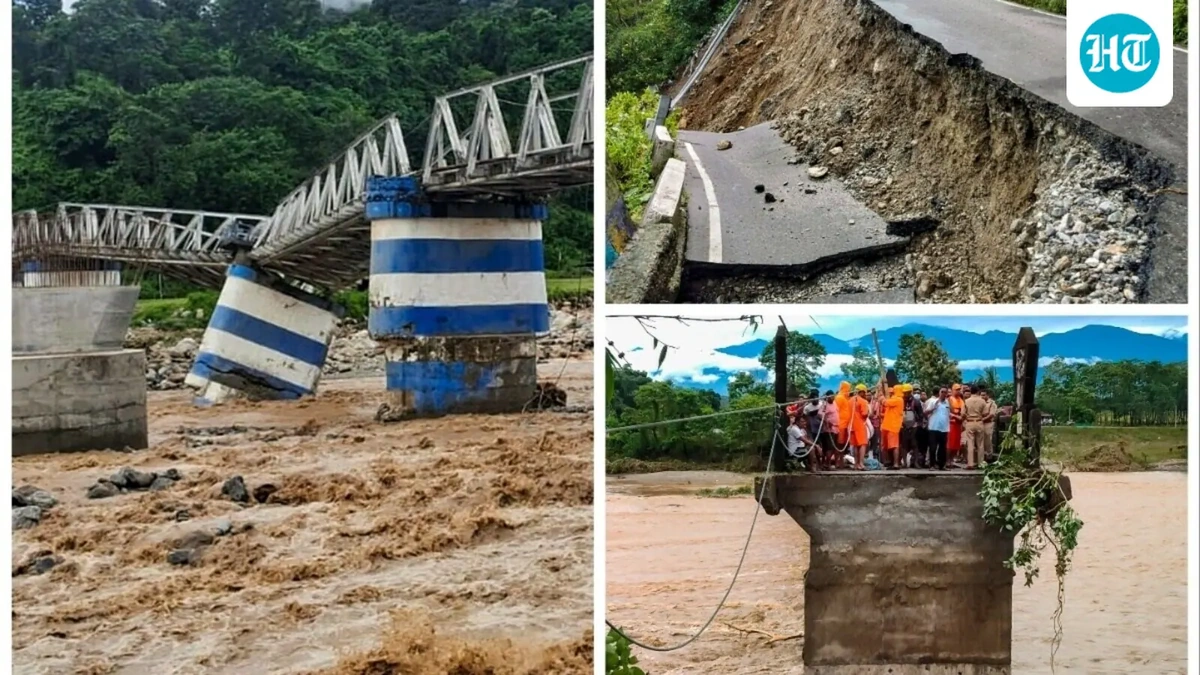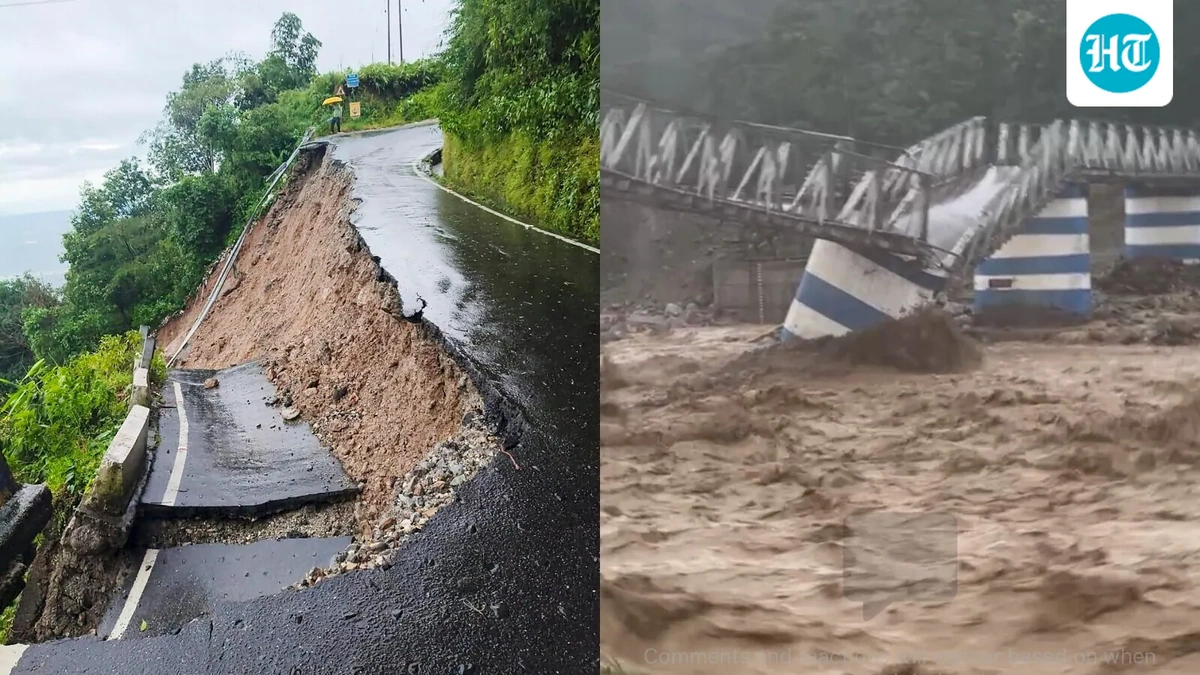Darjeeling Landslides 2025 | Causes, Effects, and NDMA Guidelines for UPSC
Okay, let’s be honest – when you hear “Darjeeling,” you probably think of tea, right? Rolling hills, maybe a toy train chugging along… But there’s another, far less picturesque side to this Himalayan paradise: Darjeeling landslides . And in 2025, the stakes are even higher. Why? Because climate change isn’t just some abstract concept; it’s actively reshaping the very ground beneath our feet.
This isn’t just about some rocks tumbling down a hill. This is about lives, livelihoods, and the delicate balance of an entire ecosystem. This is why understanding the causes of landslides , their cascading effects, and what the National Disaster Management Authority (NDMA) recommends is crucial, especially if you’re prepping for the UPSC exam. Think of this not just as geography, but as applied governance and disaster management – stuff that matters in the real world.
The Looming Threat | Why Darjeeling Is So Vulnerable

Here’s the thing: Darjeeling’s geology makes it inherently prone to landslides. The region is part of the young, fragile Himalayas, characterized by steep slopes and easily erodible soil. Throw in increasingly erratic rainfall patterns – thanks, climate change! – and you’ve got a recipe for disaster. Deforestation also plays a huge role. When you chop down trees, you remove the natural anchors that hold the soil together. A common mistake I see is people underestimating the interconnectedness of these factors.
So, you may be wondering, what are the key factors contributing to slope instability ? Besides the obvious (heavy rainfall, seismic activity), consider these:
- Unplanned Construction: Buildings and roads disrupt natural drainage patterns, adding weight to already unstable slopes.
- Agriculture Practices: Certain farming methods can strip the soil of its nutrients and make it more susceptible to erosion.
- Climate Change: Intensified rainfall events and altered weather patterns exacerbate existing vulnerabilities.
Let me rephrase that for clarity: It’s not just one thing; it’s a perfect storm of environmental degradation and unsustainable practices.
Cascading Consequences | The Real-World Impact
The effects of landslides are far-reaching and devastating. We’re talking about:
- Loss of Life and Property: This is the most immediate and tragic consequence.
- Disruption of Infrastructure: Roads, bridges, and communication networks get destroyed, isolating communities.
- Economic Losses: Tea gardens, a mainstay of the Darjeeling economy, suffer extensive damage.
- Environmental Degradation: Landslides alter landscapes, damage ecosystems, and pollute water sources.
But it’s the secondary impacts that often get overlooked. Think about the long-term psychological trauma on affected communities, the displacement of people, and the strain on already limited resources. According toWikipedia, landslides can also trigger secondary hazards like flash floods and debris flows. The situation gets complicated very quickly.
And consider how this impacts UPSC aspirants. Disaster management is a key part of the syllabus, covering everything from prevention and mitigation to response and rehabilitation. A deep understanding of events like the Darjeeling landslides is crucial for answering questions on climate change, environmental policy, and governance.
NDMA Guidelines | A Framework for Resilience
The National Disaster Management Authority (NDMA) plays a pivotal role in formulating guidelines and strategies for disaster preparedness and mitigation. Their guidelines for landslide management focus on a multi-pronged approach:
- Hazard Zonation Mapping: Identifying areas prone to landslides.
- Early Warning Systems: Developing systems to detect and alert communities about impending landslides.
- Structural and Non-Structural Measures: Implementing engineering solutions and land-use regulations to minimize risk.
- Community Participation: Engaging local communities in disaster preparedness and risk reduction efforts.
What fascinates me is how these guidelines emphasize a shift from reactive to proactive disaster management. It’s not just about responding to landslides after they happen; it’s about preventing them in the first place. For UPSC, understanding the NDMA guidelines is essential, not just for rote memorization, but for applying them to real-world scenarios.
Darjeeling Landslides 2025 | The Road Ahead
So, what does the future hold? The 2025 landslide risk assessment will likely show an increased vulnerability due to ongoing climate change and unchecked development. But here’s the hopeful part: We have the knowledge and tools to mitigate these risks. Implementing sustainable land-use practices, investing in early warning systems, and empowering local communities are crucial steps.
A common mistake I see people make is viewing these issues in isolation. Climate change, deforestation, unplanned construction – they’re all interconnected. Addressing the environmental impact of tourism , for instance, is critical. As per the guidelines mentioned in the information bulletin, we need a holistic approach that considers the long-term sustainability of the region. You can get information about Jalandhar weather here .
What’s next? Think about the role of technology. Remote sensing, GIS mapping, and AI-powered early warning systems can revolutionize landslide management. And how do we fund these initiatives? Public-private partnerships, international collaborations, and innovative financing mechanisms are all part of the solution.
FAQ Section
What are the primary causes of landslides in Darjeeling?
Heavy rainfall, deforestation, unplanned construction, and the region’s fragile geology are major contributing factors.
How do NDMA guidelines help in mitigating landslide risks?
They provide a framework for hazard zonation mapping, early warning systems, and sustainable land-use practices.
What can local communities do to reduce their vulnerability to landslides?
Participate in awareness programs, adopt sustainable farming practices, and report any signs of slope instability.
What is the long-term impact of landslides on the Darjeeling economy?
Landslides can disrupt tourism, damage tea gardens, and lead to significant economic losses.
Are there any early warning systems in place for landslides in Darjeeling?
Yes, but they need further development and wider implementation to be more effective.
How does climate change exacerbate the risk of landslides in Darjeeling?
It leads to more intense rainfall events and altered weather patterns, increasing slope instability. You can learn more about extreme weather patterns in Delhi here .
Ultimately, the future of Darjeeling depends on our ability to learn from past mistakes and embrace a more sustainable path. It’s a complex challenge, but one that we must confront head-on. This understanding is crucial for aspirants navigating the intricacies of the UPSC syllabus and its real-world applications.













